Impossible configurations for geodesics on negatively-curved surfaces
Anthony Phillips, February 2019
Introduction.
By a configuration on a surface $S$ we mean a 4-valent, connected
graph embedded in $S$. Going straight (neither right nor left) at
each intersection decomposes any configuration canonically into a
collection of closed curves (the tracks of the
configuration) intersecting themselves and others
transversally.
A basic question is whether or not there is a hyperbolic metric on
$S$ such that the configuration is isotopic to a collection of closed
geodesics intersecting transversally. We will say in this case that
the configuration can be realized by geodesics.
It is an old but remarkable fact that the following simple
configuration on the pair of pants cannot be realized by
a geodesic in
any metric of negative curvature.
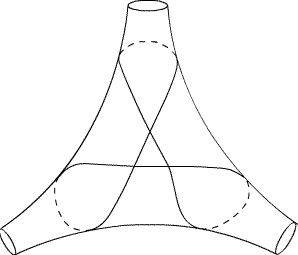
Fig. 1. This example was discovered
and published in 1999 by Joel Hass and Peter Scott [HS]. As
they remark, their proof of non-realizability can be
by replaced by an argument, due to
Ian Agol, using the Gauss-Bonnet Theorem.
In this paper Agol's argument is generalized to produce
an infinite
family of non-realizable configurations, the polygonal impossible
configurations, including a unicursal,
non-realizable
configuration filling the surface
of genus $n$ with $k$ punctures for every $n\geq 2$ and $k\geq 0$. In some sense polygonal impossible configurations
are all of the non-realizable examples that can be constructed
using this general form of the argument.
Preliminaries: We will construct configurations with the
following properties.
- The first
is required by negative curvature. None of the curves represents a
power ($>1$) in the
free homotopy group $\pi_1S$, nor do two distinct curves
represent powers ($\geq 1$) of the same element of $\pi_1S$. Since
in negative curvature each free homotopy class contains a unique
geodesic, a power curve collapses to multiple tracings of
a single geodesic, and two homotopic curves collapse to the
same geodesic; in either case the initial configuration is
destroyed.
- The second is that the configuration fills the surface in
the sense that every complementary region is topologically either
a disc or a once-punctured disc.
Without this property one easily gets examples with any genus or
number of deleted points directly from the Hass-Scott example
by adding punctures and handles.
Polygonal impossible configurations.
Definition: A polygonal impossible configuration $\mathcal{P}$
is an orientable, connected 2-dimensional cellular complex
constructed as follows:
- Choose a number $N\geq 3$, which will be the number of vertices in
the configuration.
- Choose a number $p$, with $N/4\leq p\leq N/3$, and $p$ polygons $A_1,\dots, A_p$ which together have $N$
corners
(This is possible since $p\leq N/3$). Furthermore, at least one $A_i$ must
be a triangle: see the remark below.
- Let $q=N-2p$. Choose $q$ even-sided polygons $B_1,\dots, B_q$ which
together have $2N$ corners. (This is possible since $p\geq N/4$ implies
$4q = 4N-8p \leq 2N$).
- Identify an edge of one of the $A_i$ with every other edge of each
$B_j$, preserving orientations. Avoid forming a chain of squares: such
a chain would lead to two parallel tracks. [Maybe codify this
identifcation by a map: {free B-edges}->{A-edges}]
Remark: At least one of the $A_i$ must be a triangle.
In fact, suppose first all the $A_i$ are squares;
then $N=4p, q=N-2p=2p$, and $2N/q=4$, so all the $B_i$ must also
be squares; and then the configuration $\mathcal{P}$
constructed by the algorithm will
be made up of one or more sets of parallel curves, so cannot be
non-power. On the other hand if all the $A_i$ have $\geq 4$
sides, and at least one has strictly more, then $N>4p$ contradicting
$p\geq N/4$.
Proposition 1. A polygonal impossible configuration cannot
cannot be embedded
in a surface of negative curvature so that the set of curves defined
by its 1-skeleton is a set of geodesics.
Proof:
Set $n_i$ to be the number of vertices of $A_i$, and $\alpha_{i,j}$,
$j=1,\dots, n_i$ to be the interior angle at the $j$th vertex of $A_i$.
Likewise set $m_i$ to be the number of vertices of $B_i$, and $\beta_{i,j}$,
$j=1,\dots, m_i$ to be the interior angle at the $j$th vertex of $B_i$.
Assume all the edges are geodesic arcs extending smoothly from
polygon to polygon, so that each of the $\alpha_{i,j}$ is
complementary to exactly two of the $\beta_{i,j}$.
The Gauss-Bonnet theorem [Wu] gives
$$\alpha_{1,1} + \alpha_{1,2} + \cdots \alpha_{1,n_1} < (n_1-2)\pi\\
\\\dots\\
\alpha_{p,1} +\alpha_{p,2} + \cdots \alpha_{p,n_p} < (n_p-2)\pi.$$
Adding these equations,
$$\sum _{i=1}^p\sum_{j=1}^{n_i}\alpha_{i,j}< (N - 2p)\pi. ~~~~ (*)$$
Similarly, the sum of all the $\beta$s is strictly less than
$(2N - 2q)\pi$.
On the other hand each $\beta$ is $\pi - \alpha$ for some
$\alpha$, with each $\alpha$ occurring exactly twice.
So $$(2N-2q)\pi > \sum _{i=1}^q\sum_{j=1}^{m_i}\beta_{i,j}
= 2\sum _{i=1}^p\sum_{j=1}^{n_i}(\pi -\alpha_{i,j})
= 2N\pi -2\sum _{i=1}^p\sum_{j=1}^{n_i}\alpha_{i,j}$$
i.e. $\sum _{i=1}^p\sum_{j=1}^{n_i}\alpha_{i,j} > q\pi$.
Since by the construction $q=N-2p$, this inequality contradicts $(*)$.
The genus of a polygonal impossible configuration; minimal configurations.
Consider a polygonal configuration $\mathcal{P}$ created from $N$,
$A_1, \dots, A_p$ and $B_1, \dots B_q$ as above. Topologically,
$\mathcal{P}$ is an orientable surface with boundary: the
$N$ unused edges of the $B$s are grouped by the identifications in
step 4 above into a certain number $\gamma_1, \dots, \gamma_r$ of
closed curves, which together form $\partial\mathcal{P}$.
Adding a disc along each $\gamma_i$ creates
a closed, orientable surface $S_{\mathcal{P}}$, with Euler characteristic
$\chi=N-2N+(p+q+r) = -p+r~$, and genus
$$g_{\mathcal{P}} =
\frac{1}{2}(2-\chi) = \frac{1}{2}(2-r+p)~~~~~(*).$$
We can take $g_{\mathcal{P}}$
as the genus of $\mathcal{P}$; this matches the usual definition of
the genus of a graph as the genus of the simplest surface on which it
can be embedded so that its complement is topologically a set of discs.
To make $S_{\mathcal{P}}$ into a hyperbolic
surface on which $\mathcal{P}$ gives an impossible, filling
configuration it suffices to puncture each monogon or bigon of $S_{\mathcal{P}}$ and,
in case $\chi=0$ or $2$, to add punctures to one or more
of the discs.
We will call a polygonal configuration on a smooth surface minimal if
it fills the surface, and has the smallest possible number of vertices.
Since $r\geq 1$, $(*)$ implies that $p$, the number of $A$-polygons,
must satisfy $p\geq 2g-1$. And since each $A$-polygon is at least
a triangle, the minimum number of vertices for a polygonal impossible configuration
filling the smooth surface of genus $g \geq 2$ is $6g-3$.
Examples.
The smallest possible $N$ is $N=3$. Here $p$ and $q$ must equal 1,
with $A_1$ a triangle and $B_1$ a hexagon.
There are two ways to make the identification, with different results,
as shown in Fig. 2.
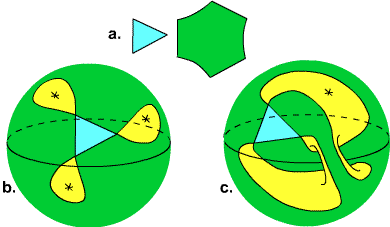
Fig. 2. $N=3$. a. one triangle, one
hexagon. b.
(Asterisks represent punctures).
This
is the configuration exhibited by Hass and Scott; the identification gives
$r=3$ and $g_{\mathcal{P}}=0$, yielding a (1-track)
impossible configuration on the
3-punctured sphere.
c. Otherwise the identification gives $r=1$ and $g_{\mathcal{P}}=1$; hence
a graph on the torus which becomes an impossible (3-track)
configuration
on the punctured torus.
Unicursal, filling configurations 1: Smooth surfaces of genus $\geq 2$.
Definition. A configuration is unicursal if it has
exactly one track, i.e., as described in the introduction,
if it can be traversed by a single curve.
Proposition 2. There exists a minimal unicursal impossible polygonal
configuration filling the smooth surface of genus $n$.
Proof:
We begin with genus $2$.

Fig. 3. A 1-track impossible configuration on the genus-2 surface with
$N=9, p=3, q=3$ (decagon and 2 squares), $r=1$.
This construction can be extended to give an impossible configuration $\mathcal{P}_n$
filling
the surface of genus $n$, for each $n\geq 2$.

Fig. 4. The configuration $\mathcal{P}_n$ has $p=2n-1$ triangles corner-matched
by $2n-2$ squares and a $(4n+2)$-gon. It has $r=1$ (see Fig. 5) and
therefore genus $n$.
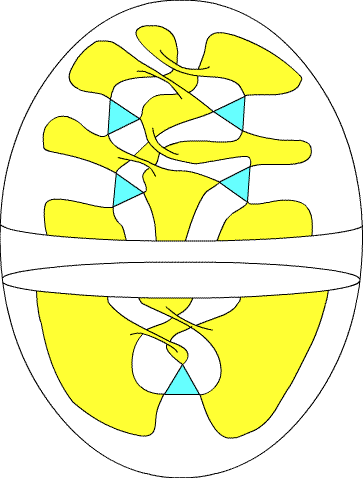
Fig. 5. The boundary of $\mathcal{P}_n$ is a polygon with $6n-3$
vertices. For this picture the $B$-polygons have been suppressed.
Assertion: The configuration $\mathcal{P}_n$ has
a single track if $n\equiv 0$ or 2 mod 3, and 3 tracks if $n\equiv 1$ mod 3.
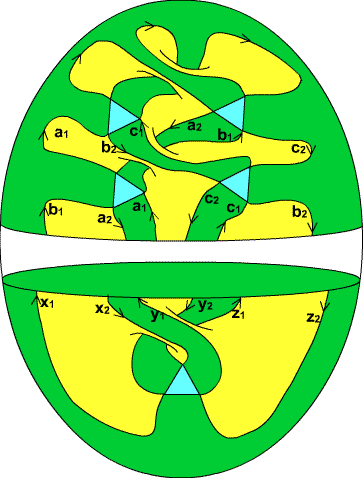
Fig. 6. The top and the bottom of $\mathcal{P}_n$, with arrows tracing
a path through the configuration.
In fact, at each stage in the assembly there are 3 tracks of
the curve, ${\bf a_1}{\bf a_2},{\bf b_1}{\bf b_2}$ and ${\bf c_1}{\bf c_2}$.
Adding the next stage permutes the six free ends by the cycle
$({\bf a_1}{\bf b_1}{\bf c_1})({\bf a_2}{\bf c_2}{\bf b_2})$. After 0
iterations ($n=2$),
the ends ${\bf a_1},{\bf b_2},{\bf c_1},{\bf a_2},{\bf b_1},{\bf c_2}$
will be joined respectively to the free ends of the bottom
${\bf x_1},{\bf x_2},{\bf y_1},{\bf y_2},{\bf z_1},{\bf z_2}$ resulting
in a single loop: ${\bf x_1}{\bf a_1}{\bf a_2}{\bf y_2}{\bf y_1}{\bf c_1}
{\bf c_2}{\bf z_2}{\bf z_1}{\bf b_1}{\bf b_2}{\bf x_2}$. After 1 iteration ($n=3$),
there still is a single loop: ${\bf x_1}{\bf b_1}{\bf b_2}{\bf z_2}{\bf z_1}{\bf c_1}
{\bf c_2}{\bf y_2}{\bf y_1}{\bf a_1}{\bf a_2}{\bf x_2}$. But after 2
iterations ($n=4$) the identifications give three loops:
${\bf x_1}{\bf c_1}{\bf c_2}{\bf x_2}$, ${\bf y_1}{\bf b_1}
{\bf b_2}{\bf y_2}$, ${\bf z_1}{\bf a_1}{\bf a_2}{\bf z_2}$.
Since the permutation has order 3, the sequence repeats.
The case of genus $3k+4$, and $k\geq 0$
requires a slightly more complicated construction to
produce a family of minimal, unicursal, filling
configurations.

Fig. 7. The configuration $\mathcal{Q}_k$ has $6k+7$
$A$-polygons, all triangles, so $N=18k+21$ and $q=6k+7$.
The $B$-polygons are $6k+6$ squares and one $12k+18$-gon.
One can check this configuration is unicursal and that $r=1$,
so the genus is $\frac{1}{2}(2+p-r)=3k+4$ and the configuration
is filling.
Unicursal, filling configurations 2: Surfaces with punctures.
Theorem 1. A polygonal configuration is unicursal only
if the number of vertices is odd.
This theorem is proved in the Appendix.
For configurations filling surfaces with two or more punctures,
this theorem produces a conflict between being unicursal and being minimal,
as defined above. Suppose that $\mathcal{P}$ $(N, p, q, r)$ is a minimal,
unicursal configuration on the smooth surface $\Sigma_{n,0}$
of genus $n$. By minimality and $(*)$, $p=2n-1$. Since $r=1$ the
surface can be given one puncture in that complementary region; the
result will be a minimal, unicursal configuration filling $\Sigma_{n,1}$.
No problem so far. Working on $\Sigma_{n,2}$ we will need $r=2$ and,
by $(*)$, $p=2n$. Minimality would require all $p$ of the $A$-polygons
to be triangles, but then $N=3p$ would be even and, by Theorem 1, the
configuration cannot be unicursal. Both possibilities can be realized
separately,
by adding to the configutation
$\mathcal{P}$ one or the other of the sub-configurations
shown in Fig. 8.

Fig. 8. These two sub-configuration can be added to
a configuration $\mathcal{P}$ filling $\Sigma_{n,k}$.
Sub-configuration a. can be
interpolated along a free edge of any $B$-polygon; b. can
be inserted at any of the interfaces between a $B$-polygon and an $A$.
The result is a configuration on the same surface, but with $r$
increased by 1. Puncturing the new $C$-cell will give a
polygonal impossible configuration filling $\Sigma_{n,k+1}$.
If $\mathcal{P}$ was minimal, using a. will also give
a minimal configuration; but it will clearly not be unicursal.
If $\mathcal{P}$ was unicursal, using b. will also give
a unicursal configuration; but it will not be minimal.
This discussion can be summarized as follows:
Proposition 3.
There exist a minimal polygonal impossible configuration and a
unicursal polygonal impossible configuration filling the
surface of genus $n$ with $k$
punctures, $n\geq 2, k\geq 0$. These are generally different.
Appendix: Unicursal configurations.
The examples shown in Figs. 2 and 3 suggest the following statements.
Theorem 1. The number of tracks of a
polygonal impossible configuration is congruent mod 2 to the
number of vertices. In particular, such a configuration can only be
unicursal if the number of vertices is odd.
Theorem 2. A polygonal impossible
configuration with an odd number of vertices
can be adjusted, by changing the identifications in step 4 of the
algorithm, to be unicursal. (This may change the genus; see Remark
below.)
Preliminaries for the proofs.
- Taking the planar polygons
$A_i$ and $B_i$ as in the construction of the
configuration, give each one the standard (counterclockwise)
orientation. Then give the segments of the configuration
their inherited orientation, except segments shared by an
$A$ and a $B$ keep their
$A$-orientation. With this convention, the track-segments
at each intersection are coherently oriented, and give a well-defined
orientation on each track (Fig. 9).
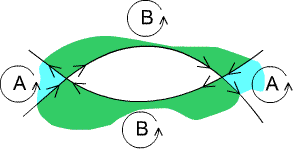
Fig. 9. The $A$ and $B$ orientations are adjusted to give
a well-defined
orientation on each track.
- Project the configuration into the plane, and consider
it as a collection of oriented immersed curves.
The configuration depends only on the
nature of the polygons $A_i$ and $B_i$ and the way they are connected.
In particular, its projection can be displayed so that the
$A_i$ and $B_i$ appear as in Fig. 10.
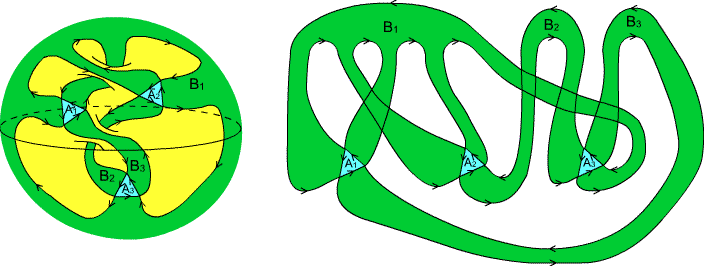
Fig. 10. The projection of a
polygonal impossible configuration can be displayed
with all the $B$ polygons at the top, all the $A$ polygons at
the bottom, and so that the only horizontal tangents appear at
the top and at the bottom. This figure shows the configuration
from Fig. 3, oriented as above, with its display in this form.
Proof of Theorem 1.
1. We show that the sum of the rotation numbers of the projected
complex of curves
is even. This is the sum of the degrees of the Gauss maps, which take a
parameter value to the unit tangent vector to the track in
question, considered as a point on the unit circle. The degree of a
smooth map is equal modulo 2 to the number of inverse images of
a regular value [M]. For a regular value we choose $(-1,0)$, the horizontal
unit vector pointing left.
First, inspection of Fig. 10 shows that each
$B$ polygon contributes exactly one to the count of inverse images
of $(-1,0)$. With notation from the definition of polygonal impossible
configuration, the contribution of the $B$-polygons is $q$.
Next we will show that $(*)$ the $n_i$-gon $A_i$
contributes $n_i-2$ to this count. It will follow that the total
contribution of the $A$-polygons is $\sum_{i=1}^p (n_i - 2) = N-2p$.
Since $q=N-2p$, the grand total is the even number $2q$.
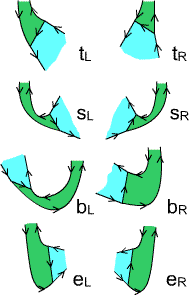
Fig. 11. The eight possible relative positions of an edge
in an general-position oriented polygon: ${\bf t}_L, {\bf t}_R$ top left and right,
${\bf s}_L, {\bf s}_R$ side left and right, ${\bf b}_L, {\bf b}_R$
botton left and right and ${\bf e}_L, {\bf e}_R$ top-to-bottom left
and right.
To prove $(*)$ note that an oriented $n$-gon in
general position must
fall in one of the three cases:
- ${\bf t}_L + {\bf t}_R + {\bf b}_L + {\bf b}_R + (n-4)\{{\bf s}_L, {\bf s}_R\}$
- ${\bf e}_L + {\bf t}_R + {\bf b}_R + (n-3){\bf s}_R$
- ${\bf e}_R + {\bf t}_L + {\bf b}_L + (n-3){\bf s}_L$.
In each of these cases, the number of inverse images of $-x$ is $n-2$
(compare Fig. 11).
2. The number of self-intersection points of an immersed oriented curve
in the plane, counted mod 2, is one less than its rotation number.
(Because the self-intersection number mod 2 is a regular homotopy
invariant [W2], and because any
curve with rotation number $n$ is regularly homotopic to $n$ turns of a
spiral, with the endpoints joined [W1]:
a curve with $|n|-1$ intersection points).
So a curve with even rotation number must have an odd number
of self-intersection points.
3. Let $\gamma_1, \dots, \gamma_k$ be the $k$ tracks of the path
through our configuration. We know that the sum of their winding numbers
is even, so an even number $\ell$ of them have odd winding
number; these $\ell$ tracks each have even self-intersection number.
The other $k-\ell$ tracks have even winding number and therefore
odd self-intersection number. The sum of their self-intersection numbers
is therefore congruent to $k-\ell$ and therefore to $k$, since
$\ell$ is even; it follows that the sum of all the self-intersection numbers
of the $\gamma_i$ is congruent mod 2 to $k$.
4. Finally, the self-intersection points of the path through
the configuration, drawn as in Fig. 10, are of three types: those
coming from the self-intersection numbers of $\gamma_i$ for $i=1,\dots,k$,
those coming from intersections between $\gamma_i$ and $\gamma_j$ for
$i\neq j$, and those
coming from the intersections of the descending arms of the $B$-polygons.
The second and third types come in pairs. So the total number of
self-intersections is congruent mod 2 to $k$; and this must also hold
for the number of those of the first two types, which is the number
of vertices of the configuration.
Proof of Theorem 2.
Suppose the configuration, displayed as in Fig. 10, is not unicursal.
Then by Theorem 1 it has at least three distinct paths; label them
$I, J, K, \dots$ etc. Let us call the parts of the $B$-polygons that
stretch down to the $A$ connectors; an $IJ$-connector will
be one with path $I$ on the left, so leading away from the
$B$-polygon in question, and $J$ on the right. We will see that two of
the connectors can be switched (each attaching to the
$A$-polygon edge formerly attached to the other) in such a way that the
number of paths is reduced by 2. Iterating this process if necessary
proves the proposition.
Assertion: There exist three paths $I, J, K$ such that
$P(IJK)$: the configuration has an $IJ$-connector and a $KI$-connector.
Proof of Assertion: Start
with $B_1$. We can suppose without loss of generality that $B_1$
is incident to at least two paths, so $B_1$ has an $IJ$-connector
with $I\neq J$. Now
- (case a) $B_1$ has no other paths incident,
in which case it must have a $JI$-connector as well, or
- (case b)
$B_1$ is traversed by other paths $K, L, \dots$, so there must
exist
- (case b1) an $IK$-connector for some $K$
- (case b11) if $B_1$ has a $JI$-connector we have
$P(IKJ)$
and
- (case b12) if not, $B_1$ must have
an $LI$-connector for some $L\neq I$ giving $P(IJL)$.
- or (case b2)
a $JK$-connector for some $K$, which leads to $P(JKI)$.
- This leaves case a. The set of $B$-polygons
traversed by a path or paths $K, L, \dots$
different from $I$ and $J$ must be non-empty,
since the configuration has at
least three paths, and at least one polygon in that set
must be traversed by $I$ or $J$, since the configuration
is connected. That polygon must contain a connector of
type $IK, KI, JK$ or $KJ$ for some $K\neq I, K\neq J$.
Since $B_1$ contains both an $IJ$ and a $JI$, those
four connectors yield, respectively,
$P(IKJ)$, $P(IJK)$, $P(JKI)$, $P(JIK)$.
End of proof:
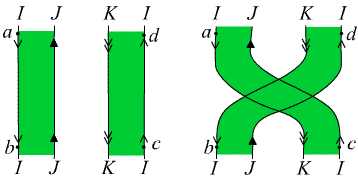
Fig. 12. The relevant part of the configuration, before and after the
connectors have been switched.
After the connectors have been switched, $I, J$ and $K$
have been welded into a single path. Initially $I$ goes
from $b$ to $c$ (out of the picture) and then from $d$
to $a$. Now between $c$ and $d$ the path also traverses the whole of $J$,
and between $a$ and $b$ it traverses the whole of $K$.
Remark. The $(IJK)$ adjustment may change the genus of
the resulting surface, because it also reconnects tracks
of $\partial\mathcal{P}$. For example, when it is made on the
3-component configuration of Fig. 2c (genus 1) it yields the
uncursal configuration of Fig. 2b (genus 0).
References
- [HS] Joel Hass and Peter Scott,
"Configurations of curves and geodesics on surfaces" (1999)
- [L] Solomon Lefschetz, Applications of Algebraic Topology, Springer, New York-Heidelberg-Berlin 1975
- [M] John Milnor, Topology from the Differentiable Viewpoint, University Press of
Virginia, Charlottesville, 1965
- [W1] Hassler Whitney, "On Regular Closed Curves in the Plane," Compos. Math. 4, 276-284, 1937
- [W2] Hassler Whitney, "The Self-Intersections of a Smooth n-Manifold in 2n-Space,"
Ann. Math., 2nd series 45, 220-246, 1944
- [Wu] Hung-Hsi Wu, Historical development of the Gauss-Bonnet theorem,
Science in China Series A Mathematics 51 777-784, 2008











